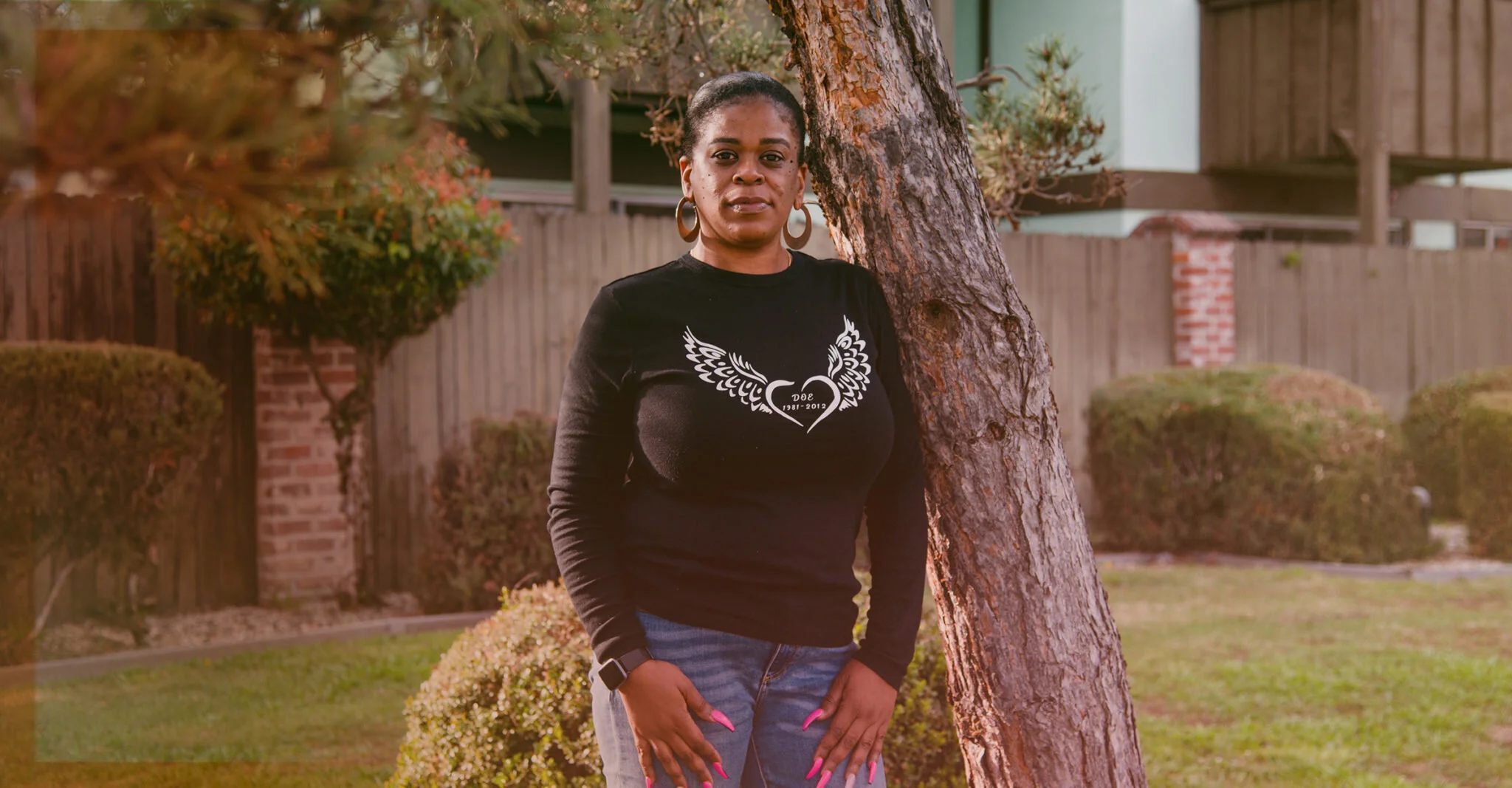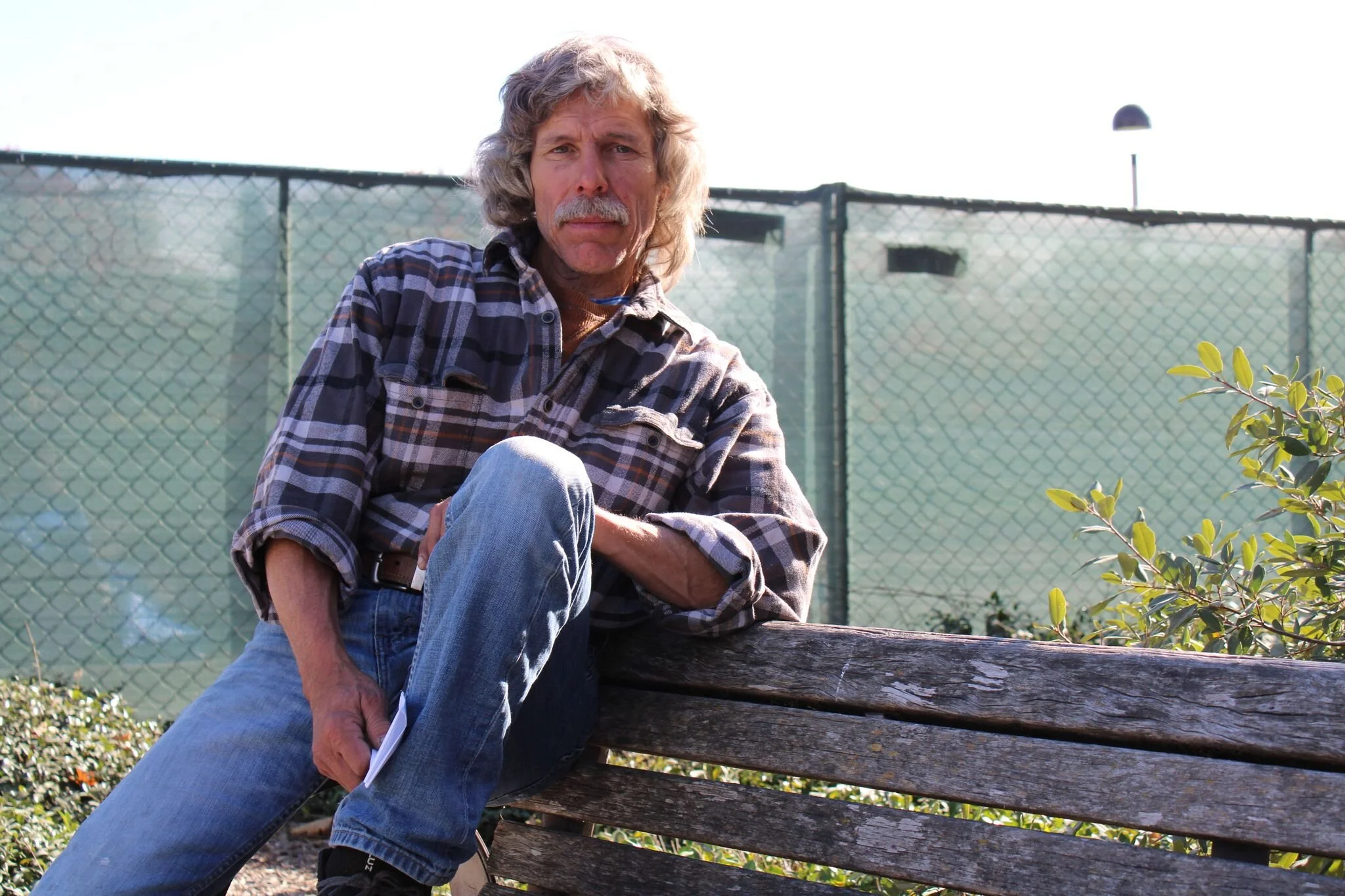Her Brother Was Blamed for His Own Murder. Now She Helps Police Treat Families With Dignity.
Her Brother Was Blamed for His Own Murder. Now She Helps Police Treat Families With Dignity.
By Ann Givens, The Trace, March 10, 2021 (photos available)
Word count: 1547
Tashante McCoy-Ham will never forget the way her mother screamed when she learned that her youngest child had been murdered. “Pray for my son,” Michele Bolding-McCoy sobbed as she knelt on the floor of the living room, her upper body sprawled across the sofa.
Though the elder woman had been a charter member of the Stockton, California, Progressive Community Church, few people came to visit in the days after the murder of Terri, then 31. There were rumors that her son had fired the first shot in the conflict that night. Police had offered no support and little information about what had happened. The family felt entirely alone. “People just think, ‘That’s supposed to happen,’” McCoy-Ham said recently of her brother’s murder. “If you get killed in an area that’s considered to be a hotspot, they think, ‘That’s your fault because you live over there.’”
McCoy-Ham had been shaken by gun violence several times in her life — and each time she felt abandoned. It was her brother’s murder in 2012, though, that made her an activist, fighting for both offenders and victims to be treated with dignity, helping to end the cycle of violence. Her advocacy took her from survivors’ homes to the state capitol, ultimately landing her in a position to advise her city’s police department.
McCoy-Ham remembers her childhood in the Central Valley in the 1980’s as warm and bustling, short on luxuries but filled with love. Her powerful, religious single mother was a fixture at the community church, spending Sundays from dawn to dusk in the building with her four children as they attended morning services, Sunday school, and evening services. During the week, she worked two jobs — as a teaching assistant by day, and as a postal worker by night. Her job at the post office allowed her to send her children across town to school, where McCoy-Ham said they were among the few Black children. At the time, she begged to go to the schools in her own neighborhood. Now, she says she’s grateful for what she learned at majority white schools — namely, the ability to find common ground with people different from herself: “It’s the basis for a lot of the work I do now.”
In 1994, when McCoy-Ham was 15, she begged her mother to let her go to a dance for all the city’s public high school students. At the tail end of the dance, a fight broke out, and many of the teens left the school building and spilled out onto the cold, rainy streets outside. A car sped by and a man in the passenger seat shot into the crowd. The bullet hit the bend in her left leg, and she was knocked down. “I remember opening my eyes, and the rain was hitting my face and I thought, ‘Did I die?’”
She was taken to the hospital but released later that same night. In the weeks that followed, as bullet fragments slowly worked their way out of her skin, she remembers few people acknowledging the trauma she’d been through — so much so that even she didn’t recognize it. Her mother chided her that she should have listened and stayed away from that dance. Friends spoke about it casually and even jokingly, quickly moving past it in their conversations. No one asked her directly how she felt about what had happened. She pushed the memory down, she said, and barely allowed herself to acknowledge that she’d been through anything more upsetting than a typical high school drama.
The year McCoy-Ham’s brother was murdered, 2012, was one of the most violent years in Stockton’s history. The city had declared bankruptcy as a result of fiscal mismanagement and the 2008 housing market crash. Terri Lynn McCoy was one of nine people killed in a 51-hour period in October of that year — one of 71 homicides that year.
He was visiting a public housing development up the street from his house when he and another man were shot and killed. McCoy-Ham was 34 by then, and had worked her way through college and had three daughters. When she got the call that her brother had been shot, she drove to the apartment complex where it happened. She saw the yellow crime scene tape and, through the glass door of one apartment, blood. Then she saw her brother lying on a walkway. As she knelt beside him, it started to rain.
“All that praying my mother did, all that community work, all that spoiling. All that just led to this,” she remembers thinking.
Terri had been the baby of the McCoy family, and always had a tight grip on his mother’s heart. A married father and stepfather by the time he died, Terri was remembered by his sister as a joker and a great hugger. But he was also on parole, and police said another man killed in the incident was affiliated with a gang. McCoy-Ham found that sparked a feeling in some people that he somehow deserved what happened. Police didn’t communicate about the crime or the legal process.
Listening to her mother’s wails after Terri was killed, McCoy-Ham thought of the 70 other Stockton mothers that were grappling with the same heartbreak that year. Gradually, McCoy-Ham began to participate in groups that supported crime victims. She started a women’s empowerment group, and another to support grieving mothers. Through her activism in her city and in Sacramento, California’s capital, she met Stockton’s Chief of Police Eric Jones. He eventually invited her to sit on the Stockton Police Department’s policy advisory board.
“She does not avoid difficult conversations,” Jones said. “She told me things that bothered her, and I learned some things. That’s what earned her a seat at the table.” She made suggestions about how police should behave at crime scenes. She told them how it felt when they left her brother’s body on the walkway all night long in the rain — how much it would have meant if someone had talked to her about what they were doing that night at the crime scene, and what was going to happen next in their investigation. Jones listened, and passed the message to his officers. He told them that whatever their next call is, it can almost always wait while they answer a few questions or explain their actions. “It will be like a deposit in the community trust bank,” he said. Another thing communities would appreciate after a trauma, McCoy-Ham suggested, would be for police to return a few days later to answer questions and listen to concerns. He found it not only helped build trust, it also helped them solve crimes.
Jones remembers being shocked when McCoy-Ham told him how little she knew about what happened to her brother. She had always been plagued by the rumors that Terri had fired at his killer first. Jones found that there was no evidence that Terri had fired a gun on the night he died. When he saw how much that knowledge meant to McCoy-Ham and her family, he was surprised and humbled. It would have taken very little for police to share such a fact years earlier.
This summer, as communities across the country protested police violence, McCoy-Ham got a call that nearly crumbled the foundation she had built working with law enforcement. Her cousin, Antwane Burrise, had been shot and killed by police. The facts of the case are disputed, and still under investigation. Police said he was wanted for murder, and they had surrounded him in a car outside an apartment complex. The police fired beanbag rounds into his car. He was taken to the hospital, where he died.
McCoy-Ham said she was shocked when the Police Department she had worked so hard to build trust with immediately vilified her cousin, offering details about how dangerous he supposedly was before there had been any investigation. Whatever crimes police suspected him of, he was killed rather than put through a fair legal process, as was his right, she said. He had been a son, husband, and father — a person whose whole life had been rattled by gun violence. “I called [the police chief] up and said, ‘I know you have a heart for change,’” she recalled. “You have to listen to me. You owe me this.”
Jones says McCoy-Ham’s magic is that even with something this raw, she’s still willing to listen, explain her feelings, and work toward change. “It’s been difficult for both of us,” he said. “But we show up. She tells me the things that bother her. I can learn some things. I can handle things better going forward.”
McCoy-Ham says she’s pointed out to Jones that their relationship has worked because he “met her backwards,” when she was already a community activist. If he had met her as a teenage shooting victim or the sister of a homicide victim, their relationship could have unfolded differently. “I am a Black woman. My cousin was murdered by the police. You need to hear me, and I have some questions for you, too,” she recalls telling him. “In this season that we are in, we need to find a way to hold space together so we can build a safer community.”






